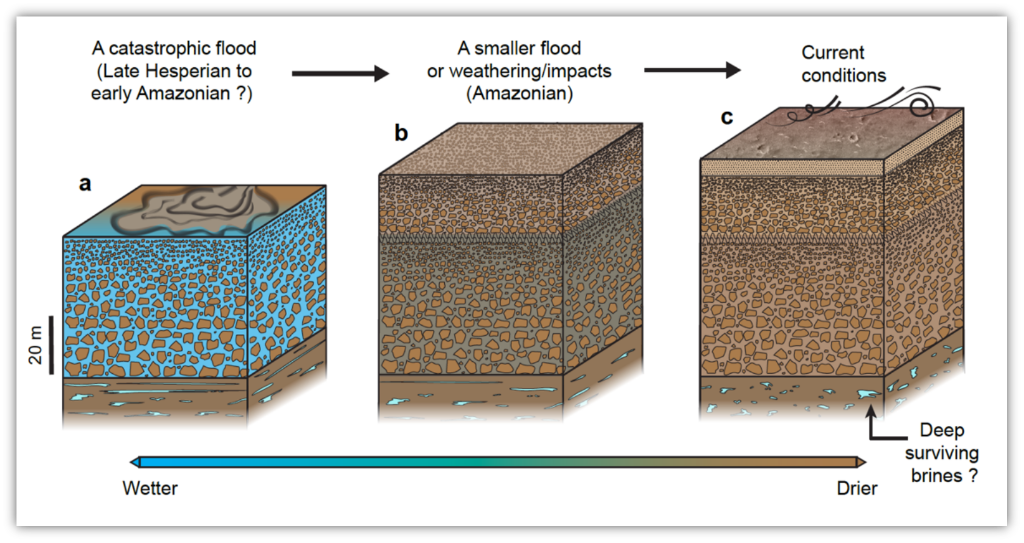Zhu Rong's detection data reveals the depth shallow structure of Mars 0 to 80 meters
Author:Xinhuanet Time:2022.09.27
Xinhua News Agency, Beijing, September 26 (Reporter Zhang Quan) The Mars Research Team of the Institute of Geology and Geophysics of the Chinese Academy of Sciences recently used the radar data obtained by the Zhu Rong Martian car, revealing the shallow of the depth of 0 to 80 meters below the surface of the Zhu Rong landing area. The fine structure and physical characteristics of the table have provided an important basis for deep understanding of Mars geological evolution and environment and climate change. Related results were published in the international academic journal "Nature" on September 26.
Zhu Rong's landing area is located in the south of the Utopia Plain. The Utopia Plain is the largest impact basin of Mars and may have been an ancient ocean. Scientists believe that there may be a livable environment in the early days of Mars. How does the geology evolve here? What kind of underground structure does today? Is there still water or ice? These issues have attracted much attention.
According to reports, the Zhu Rong first implemented a inspector radar detection in the Utopia Plain. The secondary surface detection radar equipped with it could make fine imaging of the shallow underground structure of the inspection area. The actual maximum detection depth was 80 meters. Scientific researchers conducted in -depth analysis of the low -frequency radar data with the first 113 Mars day and detection length of Zhu Rong, and obtained a high -precision structured image and strata physical information.

About 3.5 billion years ago to 3.2 billion years ago, the two -stage Mars surface transformation incident. (Pictures of the Institute of Geology and Earth Physics of the Chinese Academy of Sciences)
Researchers have found that there are two sets of thinning sedimentary sections under the Mars soil with a thick Mars soil in the area: the first set of layers is about 10 to 30 meters below the surface of Mars, which contains more stones and its particle size Gradually increased with the depth; the second set of layers is about 30 to 80 meters below the surface of Mars. Its stone has a larger stone particle size, can reach the rice level, and the distribution is more messy, reflecting the older and larger Mars Mars Surface transformation event.
"These two sets of layers may reflect the process of Mars surface transformation related to water activities from about 3.5 billion years ago to 3.2 billion years ago." Chen Ling, a researcher at the Institute of Geosciences of the Chinese Academy of Sciences, said that about 1.6 billion years The previous short -term flood, long -term weathering or repeated meteorite impact may lead to the formation of the first set of sequences, and the formation of the second set of layers may be related to the earlier large flood activities.
In addition, radar imaging results show that within the depth of 0 to 80 meters, the intensity of the reflex signal is stable, and the medium has a lower dielectric constant.
"The results of thermal simulation also further showed that liquid water, sulfate, or carbonate brine is difficult to stabilize within 100 meters below the surface of the Zhurong landing area, but the possibility of salt ice cannot be ruled out at present." Chen Ling said.
- END -
Beijing Daily: 50 wild animal specimens appear at the Beijing Natural Museum

Chinese pangolin, Zhu Xi, white cheeks gibbon ... On the 12th, the Wild Beauty -Ch...
"Property and Education Integration Communist Electric Business Talents School Enterprise Coordinated Seminar Promoting Rural Revitalization Seminar" was held

Heilongjiang News Network (Heilongjiang Daily All -Media Correspondent Shang Qi) O...